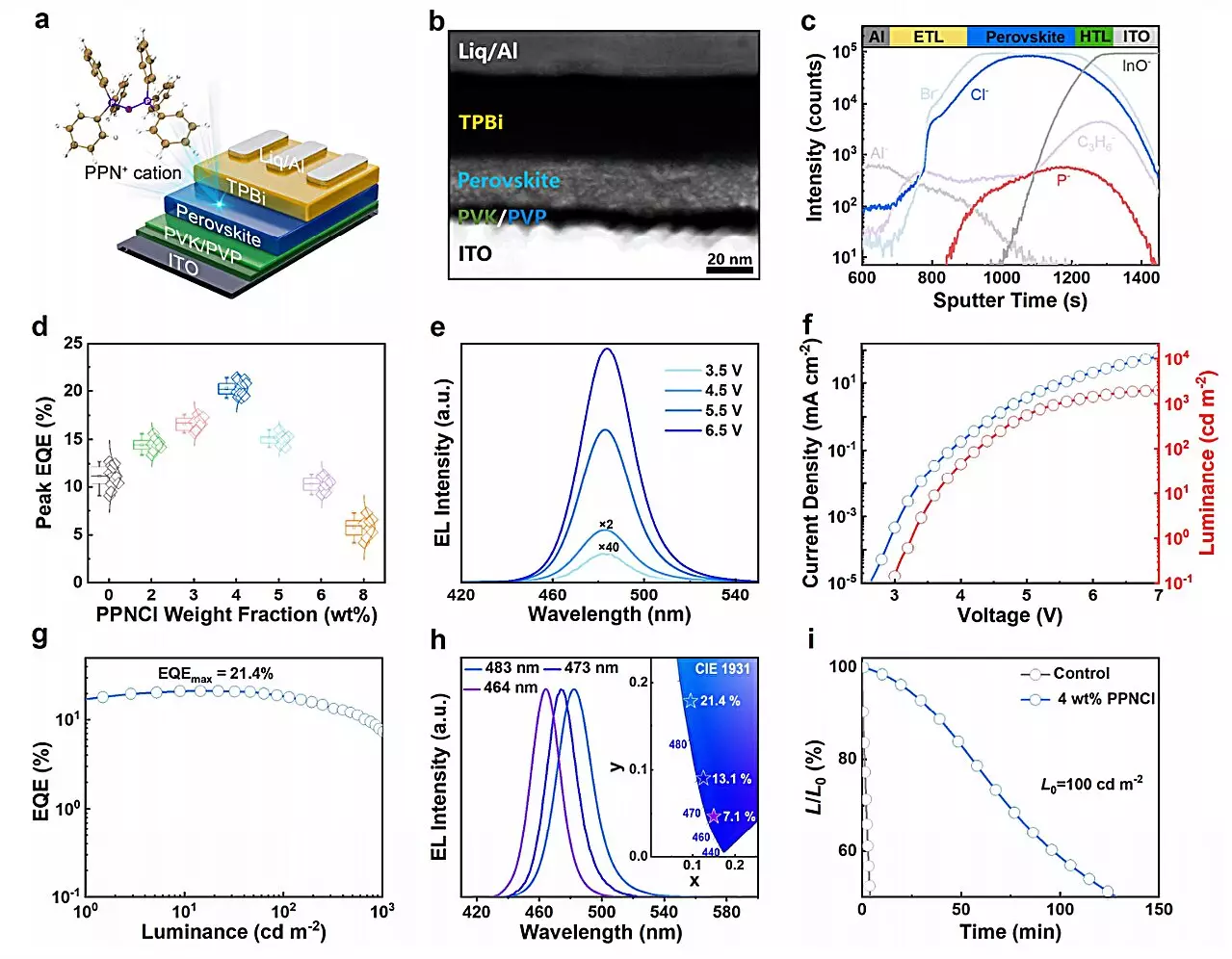Blue light-emitting diodes (LEDs) based on perovskite materials have long been considered the missing link in the evolution of LED technology. While green, red, and near-infrared perovskite LEDs have made significant strides, the development of blue perovskite LEDs has lagged behind, hindering progress in the field. However, a research team led by Prof. Cui Linsong from the University of Science and Technology of China (USTC) and Prof. Samuel D. Stranks from the University of Cambridge has introduced a groundbreaking strategy to enhance the performance of blue perovskite LEDs, opening up new possibilities for the future of lighting and displays.
The Role of PPNCl in Enhancing Efficiency and Stability
The key to the team’s success lies in the design of a multifunctional ionic additive, Bis(triphenylphosphine)iminium chloride (PPNCl). This compound, with its multiple charged resonance forms and dynamic electronic state, allows for precise control over the composition and distribution of perovskite phases in the LEDs. By interacting with the components of the perovskite through hydrogen bonding, PPNCl influences the crystallization process and promotes the transition to high-dimensional phases with enhanced luminescence efficiency. This interaction also suppresses non-radiative recombination channels and ion migration, leading to a significant improvement in both the efficiency and stability of blue perovskite LEDs.
In addition to its role in controlling phase distribution and suppressing recombination channels, PPNCl also plays a crucial role in accelerating energy transfer processes within the perovskite material. Through transient absorption (TA) spectroscopy studies, the research team discovered that PPNCl facilitates energy transfer from low-dimensional to high-dimensional phases, reducing energy loss and incomplete transfer that can result in non-radiative recombination. This enhancement in energy transfer processes further contributes to the improved efficiency and stability of blue perovskite LEDs.
The outcomes of the team’s innovative approach are truly remarkable. The blue perovskite LEDs developed with the aid of PPNCl achieved a peak external quantum efficiency (EQE) of 21.4%, setting a new record for blue perovskite LEDs. Not only that, but the stability of the devices was also greatly enhanced, with a nearly 30-fold improvement observed. These achievements represent a significant step forward in the quest for high-efficiency and stable blue perovskite LEDs, pointing towards a bright future for perovskite LED technology as a whole.
The collaboration between Prof. Cui Linsong’s team at USTC and Prof. Samuel D. Stranks’ team at the University of Cambridge has yielded groundbreaking results in the realm of blue perovskite LED technology. By harnessing the power of PPNCl to control phase distribution, enhance energy transfer processes, and improve efficiency and stability, the research team has laid the foundation for even greater advancements in the field. The future of lighting and displays looks brighter than ever with the evolution of blue perovskite LEDs leading the way.


Leave a Reply